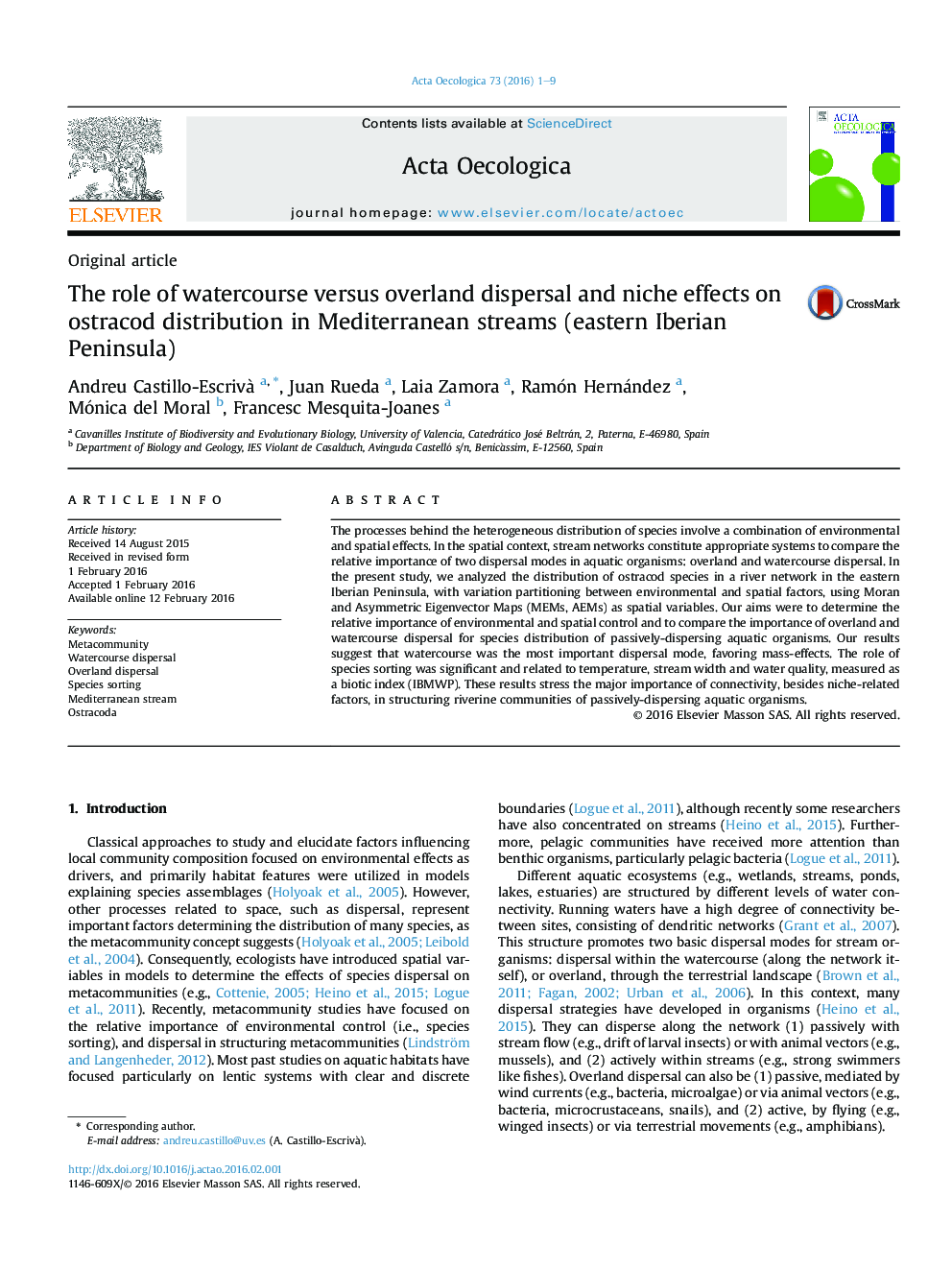| Article ID | Journal | Published Year | Pages | File Type |
|---|---|---|---|---|
| 4380696 | Acta Oecologica | 2016 | 9 Pages |
•Dispersal drives ostracod species distribution in Eastern Iberian streams more strongly than species sorting.•Watercourse dispersal prevails over overland dispersal effects in ostracods from these streams.•The main environmental factors driving ostracod distribution were temperature, stream width and water quality.
The processes behind the heterogeneous distribution of species involve a combination of environmental and spatial effects. In the spatial context, stream networks constitute appropriate systems to compare the relative importance of two dispersal modes in aquatic organisms: overland and watercourse dispersal. In the present study, we analyzed the distribution of ostracod species in a river network in the eastern Iberian Peninsula, with variation partitioning between environmental and spatial factors, using Moran and Asymmetric Eigenvector Maps (MEMs, AEMs) as spatial variables. Our aims were to determine the relative importance of environmental and spatial control and to compare the importance of overland and watercourse dispersal for species distribution of passively-dispersing aquatic organisms. Our results suggest that watercourse was the most important dispersal mode, favoring mass-effects. The role of species sorting was significant and related to temperature, stream width and water quality, measured as a biotic index (IBMWP). These results stress the major importance of connectivity, besides niche-related factors, in structuring riverine communities of passively-dispersing aquatic organisms.
